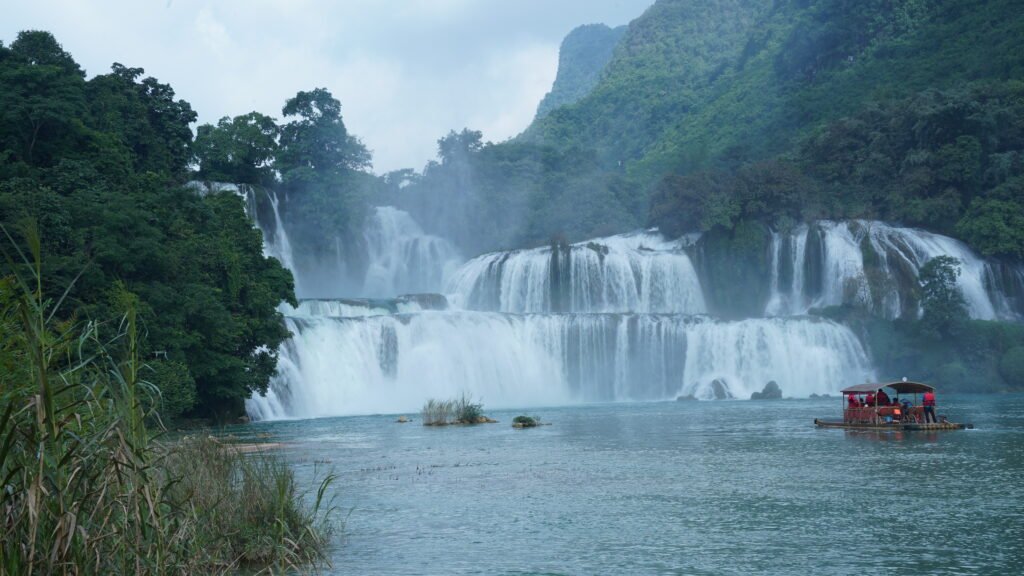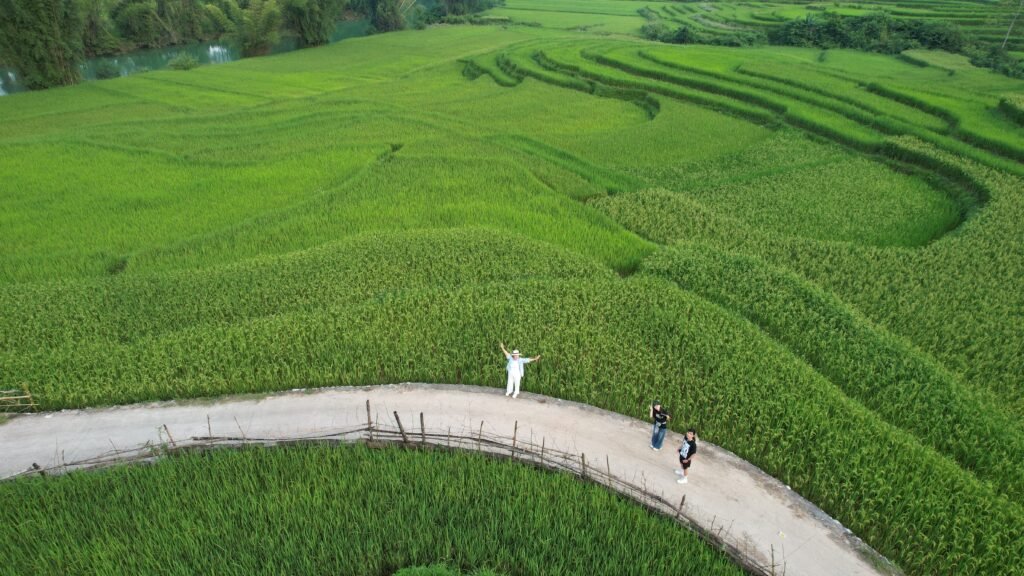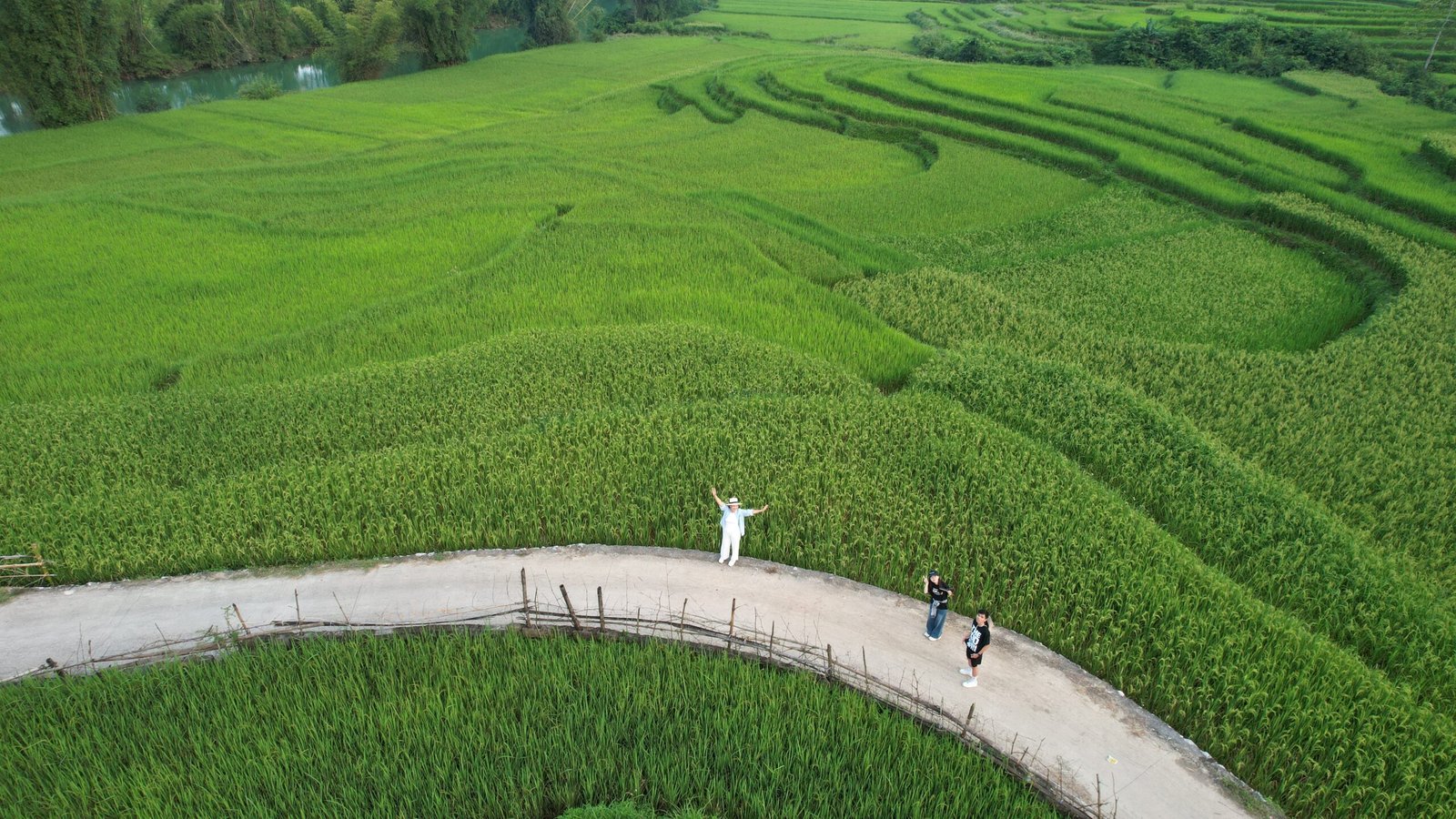Tucked away in Vietnam’s northeastern mountains, Cao Bằng is a serene destination that offers a harmonious blend of untouched nature, cultural richness, and historical depth. From thunderous waterfalls to peaceful minority villages and ancient caves, every season in Cao Bằng reveals a different side of its beauty.
However, with its mountainous terrain and variable climate, the timing of your trip can greatly influence your experience. To help you plan an unforgettable journey, here’s a breakdown of what each season brings in this underrated corner of Vietnam.
Spring (February to April): Blossoms and Crisp Mountain Air
Overview:
As winter fades, Cao Bằng slowly awakens with blooming flowers and lush greenery. The air is clean and cool, the hills begin to blossom, and the countryside comes to life after the cold months.
Why Go:
- Comfortable weather for trekking and sightseeing at sites like Ngườm Ngao Cave and Bản Giốc Waterfall.
- Hillsides and villages brighten with peach and plum blossoms, creating picture-perfect scenery.
- A quiet time of year, ideal for travelers seeking tranquility and fewer crowds.
Tip:
While daytime temperatures are pleasant, early mornings and evenings can still be chilly — bring layers.

Summer (May to August): Peak Waterfalls and Lush Scenery
Overview:
Summer in Cao Bằng means vibrant green landscapes and powerful waterfalls. This is when the region feels most alive, especially as the rainy season fuels rivers and forests alike.
Why Go:
- Bản Giốc Waterfall reaches its most impressive flow — a must-see spectacle.
- Great time for outdoor activities like bamboo rafting, swimming, or scenic drives through rural areas.
- The surrounding rice fields and forests are at their most vibrant green.
Note:
Rain is frequent in summer, and it can affect travel plans. While it enhances the beauty of the falls, it may make some mountain roads more difficult.
Tip:
Rain gear is essential, especially if you’re traveling by motorbike. Plan outings for the morning to avoid afternoon downpours.
Autumn (September to November): Clear Skies and Golden Rice
Overview:
Autumn is widely regarded as the best time to visit Cao Bằng. With cooler temperatures, minimal rainfall, and brilliant scenery, this season offers ideal conditions for exploring both nature and culture.
Why Go:
- Postcard-perfect views as rice terraces turn golden before harvest.
- Bản Giốc Waterfall still has strong flow but with clearer skies and better visibility.
- Many local festivals and markets occur during this period, providing cultural insight.
Tip:
Photographers will find endless inspiration in the contrast of golden fields, deep green hills, and bright blue skies.

Winter (December to January): Quiet Beauty and Cultural Exploration
Overview:
Cao Bằng’s winters are cold and misty, especially in high-altitude areas near the Chinese border. Though waterfalls are less powerful, the foggy landscape and tranquil atmosphere create a unique, introspective travel experience.
Why Go:
- Peaceful, crowd-free environment perfect for slow travel.
- Great opportunity to explore historical sites like Pác Bó Cave, where Ho Chi Minh lived and worked.
- More chances to connect with locals in quiet, rural homestays.
Tip:
Dress warmly — many homestays may not offer heating. If traveling by motorbike, prepare for cold winds and foggy roads.
Choosing the Right Time to Visit
- For dramatic waterfalls and lush greenery: Visit from May to August, keeping in mind the possibility of rain.
- For the most balanced weather and scenery: September to November offers the best combination of conditions.
- For peaceful landscapes and flower blossoms: Try February to April, especially if you prefer fewer tourists.
Travel Tip: Combine Cao Bằng with Hà Giang
Many travelers create a loop between Hà Giang and Cao Bằng, exploring the Northeast’s most striking landscapes. For the perfect balance of sights and weather, go in the autumn months — you’ll catch Hà Giang’s golden rice terraces and Cao Bằng’s waterfalls at their best.
Practical Travel Tips
- Getting There: Cao Bằng is approximately 6 to 7 hours from Hanoi by bus or private car. Roads are scenic and mostly well-maintained.
- Getting Around: Motorbike travel is popular and offers flexibility. Routes like DT206 from Cao Bằng City to Bản Giốc Waterfall are especially scenic.
- Where to Stay: Look for homestays in Trùng Khánh or near Bản Giốc for an authentic, affordable experience close to nature.
Final Thoughts
Cao Bằng remains one of Vietnam’s best-kept secrets — a land of powerful waterfalls, misty valleys, and deep cultural roots. No matter when you choose to go, you’ll be rewarded with a journey through one of the country’s most peaceful and poetic regions.




